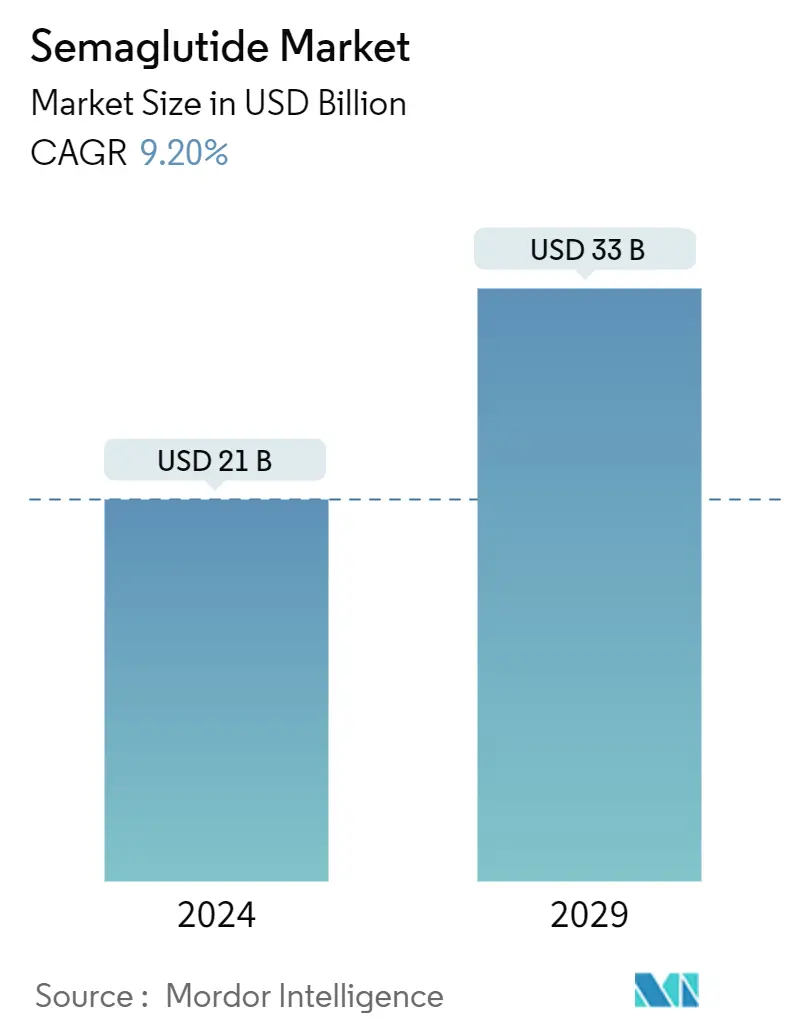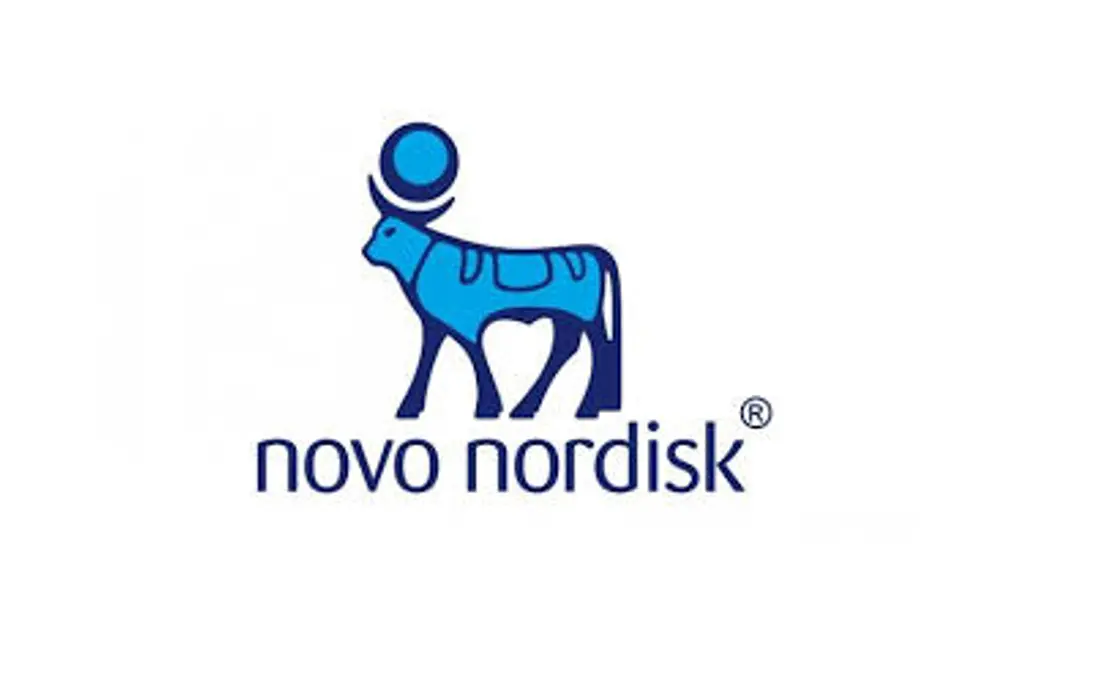Market Size of Semaglutide Industry

| Study Period | 2018 - 2029 |
| Market Size (2024) | USD 21 Billion |
| Market Size (2029) | USD 33 Billion |
| CAGR (2024 - 2029) | 9.20 % |
| Fastest Growing Market | North America |
| Largest Market | North America |
Major Players
*Disclaimer: Major Players sorted in no particular order |
Need a report that reflects how COVID-19 has impacted this market and its growth?
Semaglutide Market Analysis
The Semaglutide Market size is estimated at USD 21 billion in 2024, and is expected to reach USD 33 billion by 2029, growing at a CAGR of 9.20% during the forecast period (2024-2029).
The COVID-19 pandemic co-morbidities included hypertension, diabetes, cardiovascular disease, and cancer. According to an article,” 89-LB: COVID-19 Outcomes in Patients Who Started GLP1-RAs during Hospitalization,” published by the American Diabetes Association in June 2022, glucagon-like peptide-1 receptor agonists (GLP-1 RAs) were considered beneficial in improving COVID-19 outcomes due to their anti-inflammatory properties. Patients admitted for severe interstitial bilateral pneumonia in the COVID-19 ward due to SARS-COV2 infection and having type 2 diabetes or in-hospital hyperglycemia were treated with GLP-1 RAs in addition to standard therapy.
Furthermore, the Centers for Disease Control highlighted that COVID-19 was a serious public health threat for people with serious chronic diseases, including diabetes. People with diabetes were more likely to experience complications when infected with the virus. As per the American Diabetes Association, people with diabetes, if uncontrolled, had worse outcomes if infected with a virus such as COVID-19. The International Diabetes Federation explained that when people with diabetes develop a viral infection, it can be harder to treat due to fluctuations in blood glucose levels and diabetes complications as the immune system is compromised, making it harder to fight the virus and likely leading to a longer recovery period.
Obesity is a major health problem worldwide, resulting in numerous health conditions such as heart disease, stroke, type-2 diabetes, and certain types of cancer, which are among the leading causes of mortality. Glucagon-like peptide-1 receptor agonists have been identified as a promising option for treating obesity. Currently, five drugs for long-term use for obesity, including orlistat, phentermine-topiramate, naltrexone-bupropion, liraglutide, and semaglutide, are approved by the Food and Drug Administration. Semaglutide 2.4 mg is administered subcutaneously once a week for adults who are overweight (body mass index >27 kg/m2) with at least one weight-associated condition (such as high blood pressure, type-2 diabetes, or high cholesterol) or adults with a BMI of 30 kg/m2 or greater.
Semaglutide is used along with diet and exercise to control blood sugar levels in adults with type 2 diabetes when other medications do not control the sugar levels. Semaglutide is also used to reduce the risk of a stroke, heart attack, or death in adults who have type 2 diabetes along with heart diseases. It is not used to treat type 1 diabetes or diabetic ketoacidosis, which is a serious condition that may develop if high blood sugar is not treated. Semaglutide is a class of medications called incretin mimetics. It functions by helping the pancreas to release insulin when blood sugar levels are high. It also works by slowing the movement of food through the stomach and may decrease appetite and cause weight loss.
The World Health Assembly Resolution 2022 recommended the integration of prevention and treatment of diabetes into primary health services, the development of pathways for a substantial increase in access to insulin, the promotion of convergence and harmonization of regulatory requirements for diabetes medicines and technologies, and improved diabetes monitoring and surveillance. Furthermore, it involves the WHO to advise the Member States to ensure the uninterrupted treatment of people living with diabetes in humanitarian emergencies. This important milestone provides a global mandate for diabetes efforts for the next decade.
Major factors that are expected to boost the growth of the studied market in the forecast period are rising obesity and inactivity rates among people, which have resulted in an increase in the diabetes population over time, a rise in the sedentary lifestyle, improper dietary patterns, and the inherent history of diabetes disorders. In addition, rising investment in research and development, technological developments, and new product launches will further provide potential opportunities for the growth of glucagon-like peptide 1 (GLP-1) agonists such as Semaglutide in the coming years.
